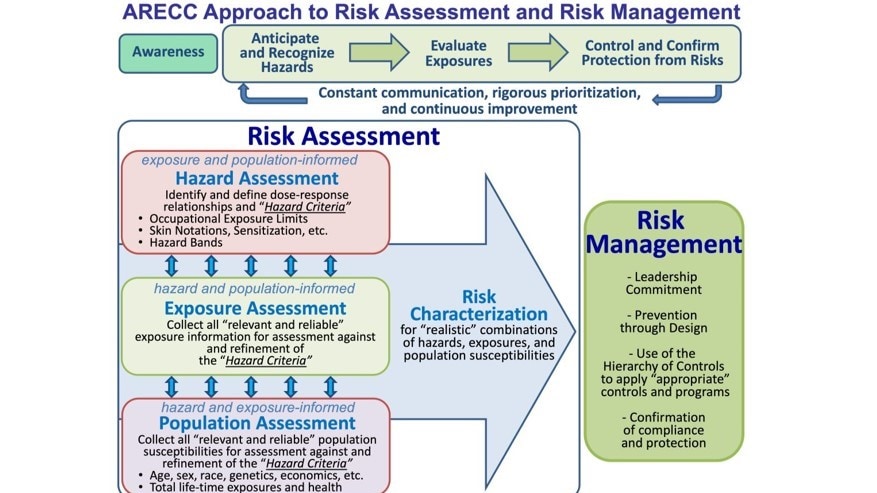Key points
- The Exposure Assessment Program provides national and international leadership in the development and use of effective exposure assessment strategies and tools to prevent work-related illness and injury.
- The program promotes the use of 21st century exposure assessment sensors, methods, and processes to protect worker safety, health, well-being, and productivity.
Overview
Exposure Assessment is the multi-disciplinary field that identifies and characterizes workplace exposures, develops estimates of exposure for exposure-response and risk assessment studies, and evaluates the significance of exposures and effectiveness of intervention strategies.

Occupational exposure assessment enables effective anticipation, recognition, evaluation, control, and confirmation of protection from workplace hazards. At each stage, health professionals consider the available information and develop a course of action that may include continuing along the original exposure assessment process, determining that no further action is required, performing additional hazard identification, refining the exposure assessment, or improving or adding engineering and/or administrative controls.
Program priorities
The EXA Program has selected research priorities on the basis of burden, need, and impact and collaborated with other NIOSH research programs to write the research goals in the NIOSH Strategic Plan for FYs 2019-2026. Priority areas include (but are not limited to):
- Better understanding pesticide exposures and chronic kidney disease of unknown etiology among agriculture and forestry workers.
- Potentially carcinogenic chemicals that are new or increasingly used in the manufacturing sector, including nanomaterials, flame retardant chemicals, bisphenol A (BPA) and other plasticizers, and per- and polyfluoroalkyl substances (PFAS).
- Measuring known or suspected lung carcinogens in the mining sector, such as silica, elongated mineral particles, and radon.
- Direct reading instruments for potential carcinogens left on fire fighters' gear after cleaning.
- Different workplace factors such as workplace stress, heat stress, and shiftwork and how they are interrelated with cardiovascular disease causation and progression among workers in the services sector.
- Hazardous dermal exposures among agriculture and oil and gas extraction industry workers.
What we've accomplished
In 2022-2023, the Program:
- Completed an exposure study on carcinogenic exposures for refined coal tar sealant workers.
- Completed studies to determine the effectiveness of controls to protect workers from SARS-CoV-2, the virus that causes COVID-19, including the use of physical barriers in customer-facing industries and ventilation control strategies in school buses.
- Developed a technical report that provides exposure assessment sampling and analytical methods to evaluate occupational risk for engineered nanomaterials (ENM). Increased ENM production, combined with widespread usage, has increased the likelihood of occupational exposure.
- Developed a new NMAM Chapter on Surface Sampling Strategies and Methods and published updated NMAM Chapters on Biological Monitoring and Fiber Characterization.
- Published new methods for the measurement of antimicrobial peracetic acid (PAA) using colorimetry and mass spectrometry and for its controlled laboratory generation to aid in evaluation of samplers for peracetic acid collection. PAA is most used in the food and beverage, healthcare, and sanitation industries and can irritate respiratory tract, skin, and eyes.
- Hosted an internal symposium among NIOSH exposure assessment scientists to discuss future exposure assessment areas of research.
- Pilot tested a data collection tool to assess and document impacts and research uptake of NIOSH exposure assessment research on Bisphenol A (BPA) and firefighting exposures.
What's ahead
In the future, the Program aims to:
- Conduct worker exposure and health assessments in manufacturing workers, service sector workers, and firefighters exposed to per- and polyfluoroalkyl substances (PFAS).
- Develop new methods and exposure assessment approaches for PFAS in stain-resistant and moisture-repellent textiles, firefighting foam, medical devices, and construction materials.
- Publish a new NMAM method for assessing exposures to Bisphenol A and Bisphenol S.
